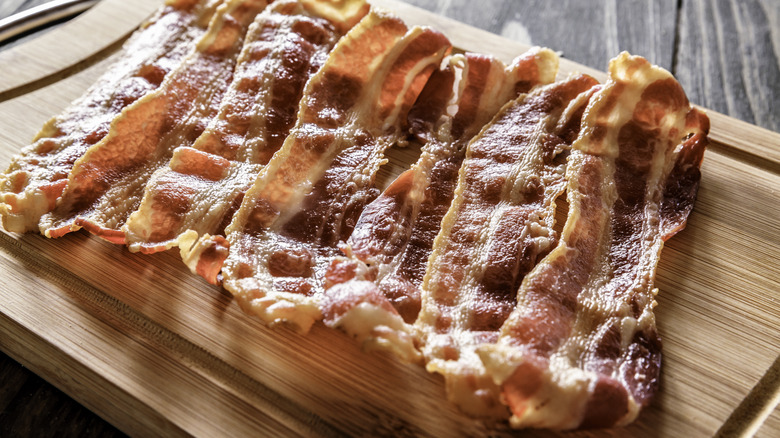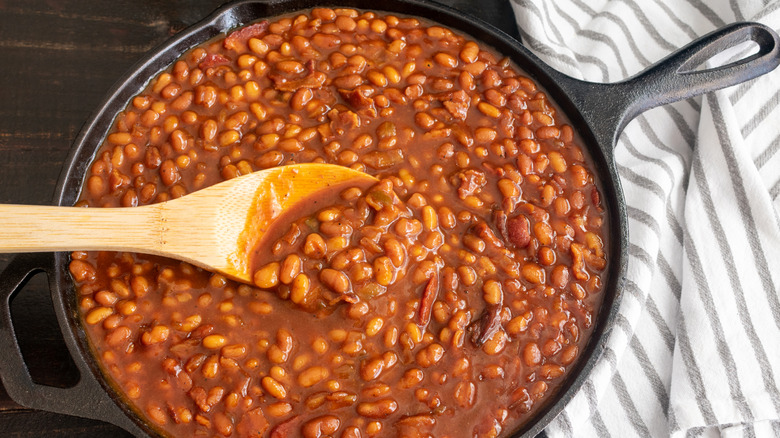The Subtle Difference Between Bacon And Salt Pork
To detect one of the key differences between bacon and salt pork, you can set down your fork and knife. All you really need to do is sniff the two products to figure out which one is which. Because salt pork, though wonderfully hefty and marbled with fat, lacks bacon's smoky aroma. Another big giveaway is that salted pork, as the name implies, is pretty salty.
Both cuts of meat come from the fat of the belly of a pig, but each one is preserved and seasoned using different methods. And while home cooks can use bacon and salt pork to imbue flavor and umami, the two are not interchangeable; the differences in preparation also impact how you can use the ingredients in recipes.
Looking at bakery and restaurant menus, it seems like bacon can fit in with just about any ingredient and meal these days. Salt pork, on the other hand, requires time and a gentle touch to join braised dishes.
Curing salt pork vs. bacon
In past times, salting and smoking emerged as two techniques to salvage unused cuts of meat and transport the perishable protein across long journeys. In particular, salted pork made an appearance on ships and on battlefields since it was so durable. Though its name may remind you of salt cod or bacalao, unlike in fish, the fatty cut here is not dehydrated nor does it require a long soak.
To preserve it, butchers treat it to an extended, slow brine and an intense salt rub. This draws out water from the meat and inhibits the growth of bacteria. Bacon, on the other hand, gets a more mild mixture of nitrates and salt to cure it quickly and retain the meat's rosy color. The slabs contain less lard and more meat than salt pork, which give it a more balanced bite.
The most important difference between the two is that manufacturers usually treat bacon to a wood smoke — think applewood or hickory — to infuse its trademark flavor. The process also leaves the meat tender enough to slice into thin pieces for easy frying. This raises the price of the product slightly compared to its salty friend and transforms it into a more versatile ingredient.
When to use salt pork (and when not to)
From BLTs to Southern bacon-wrapped crackers to bacony succotash, the beloved meat ingredient inspires creativity and adds warm flavors wherever it goes. On the other hand, salt pork flourishes when paired with slow-cooked dishes as its high fat content allows it to melt into stews and braises while adding seasoning and pork flavor.
To prepare salt pork for cooking, blanch the product in hot water for a few minutes to extract some of its sodium. Then, give it a quick cook to render and crisp slightly before using it as a base for collard greens. Another well-known use for salt pork is in New England baked beans, where it melds with molasses and legumes to create a sweet side dish.
Although you can swap in bacon to replace salt pork, the beauty of the ingredient is its high fat content adds a glossy richness to the pot and adds a more gentle aroma and porcine flavor without overpowering the meal. If you're not sure which dish to make, we have good news. You can freeze both types of cured meat, so stash a pack of bacon and salt pork in the freezer for added flexibility and culinary emergencies.



